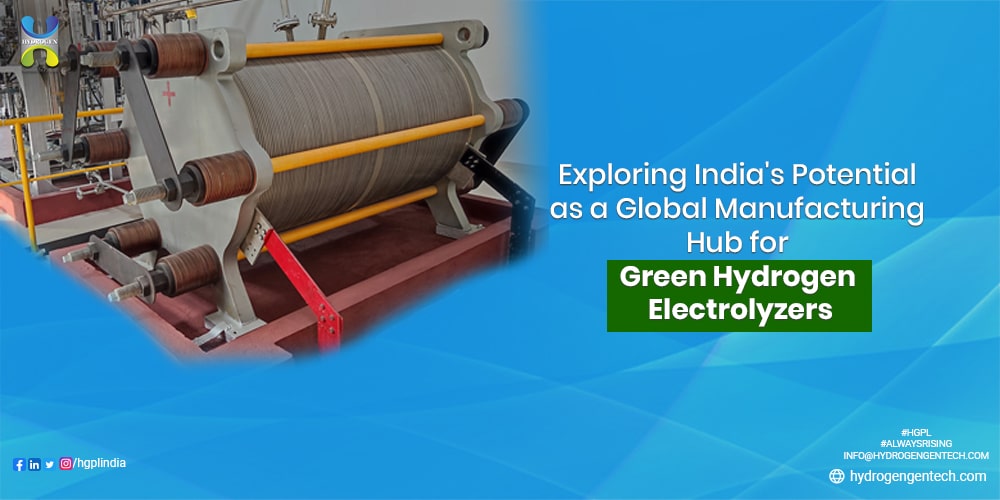Introduction
The global pursuit of sustainable energy solutions has propelled the demand for green hydrogen, a promising alternative to traditional fossil fuels. Central to the production of green hydrogen is the electrolyzer, a crucial technology that splits water into hydrogen and oxygen using electricity. India, with its burgeoning renewable energy sector and growing technological capabilities, has the potential to emerge as a global manufacturing hub for green hydrogen electrolyzers. This technical blog delves into the factors that position India as a manufacturing powerhouse for electrolyzers and examines the challenges and opportunities on this transformative journey.
Understanding Electrolyzers
Electrolyzers are pivotal components of the green hydrogen production process. These devices utilize electrical energy to initiate the electrolysis of water, resulting in the separation of hydrogen and oxygen gases. Electrolyzers consist of several key components:
- Anode and Cathode: These electrodes facilitate the electrochemical reaction by serving as sites for oxidation (anode) and reduction (cathode) processes.
- Electrolyte: An ion-conductive material that facilitates the movement of ions between the anode and cathode.
- Power Supply: An external electrical source that provides the energy required for the electrolysis process.
- Separator: A physical barrier that prevents the mixing of the produced hydrogen and oxygen gases.
- Cooling and Ventilation Systems: These systems maintain optimal operating temperatures and ensure safe gas venting.
India’s Potential as a Manufacturing Hub
- Abundant Renewable Energy: India boasts abundant solar and wind energy resources, creating a conducive environment for green hydrogen production. Electrolyzers require a consistent energy supply, making India’s renewable capacity a major advantage.
- Skilled Workforce: India’s strong engineering and technical talent pool positions it to drive innovation in electrolyzer manufacturing, from design to production and maintenance.
- Manufacturing Expertise: The country’s experience in manufacturing industries, combined with advancements in automation and robotics, contributes to efficient and high-quality production processes.
- Cost Competitiveness: India’s manufacturing capabilities can potentially lead to cost-effective electrolyzer production, which is crucial for the widespread adoption of green hydrogen.
- Government Initiatives: The Indian government’s focus on renewable energy and hydrogen as part of its energy mix supports the growth of electrolyzer manufacturing.
Challenges and Opportunities
- Research and Development: While India possesses the foundational knowledge, increased investment in research and development is essential to refine electrolyzer technology and enhance efficiency.
- Infrastructure Development: Establishing advanced manufacturing facilities, supply chains, and logistics networks will be pivotal to realizing India’s manufacturing potential.
- Global Collaboration: Collaborations with international electrolyzer manufacturers can facilitate technology transfer, skill enhancement, and knowledge exchange.
- Regulatory Framework: A clear regulatory framework that promotes innovation, quality standards, and sustainability will be crucial for the growth of the electrolyzer manufacturing industry.
- Scaling Up: As demand for green hydrogen grows globally, India must scale up its manufacturing capacity to meet international requirements.
Conclusion
India’s journey towards becoming a global manufacturing hub for green hydrogen electrolyzers holds immense promise for the nation’s energy transition and the global effort to combat climate change. With its renewable energy potential, skilled workforce, and manufacturing expertise, India can lead the way in producing efficient and cost-effective electrolyzers. By addressing challenges and capitalizing on opportunities, India can contribute significantly to a greener and more sustainable energy future, advancing the global adoption of green hydrogen and driving positive change on a global scale.
Source: Economic Times Energy


